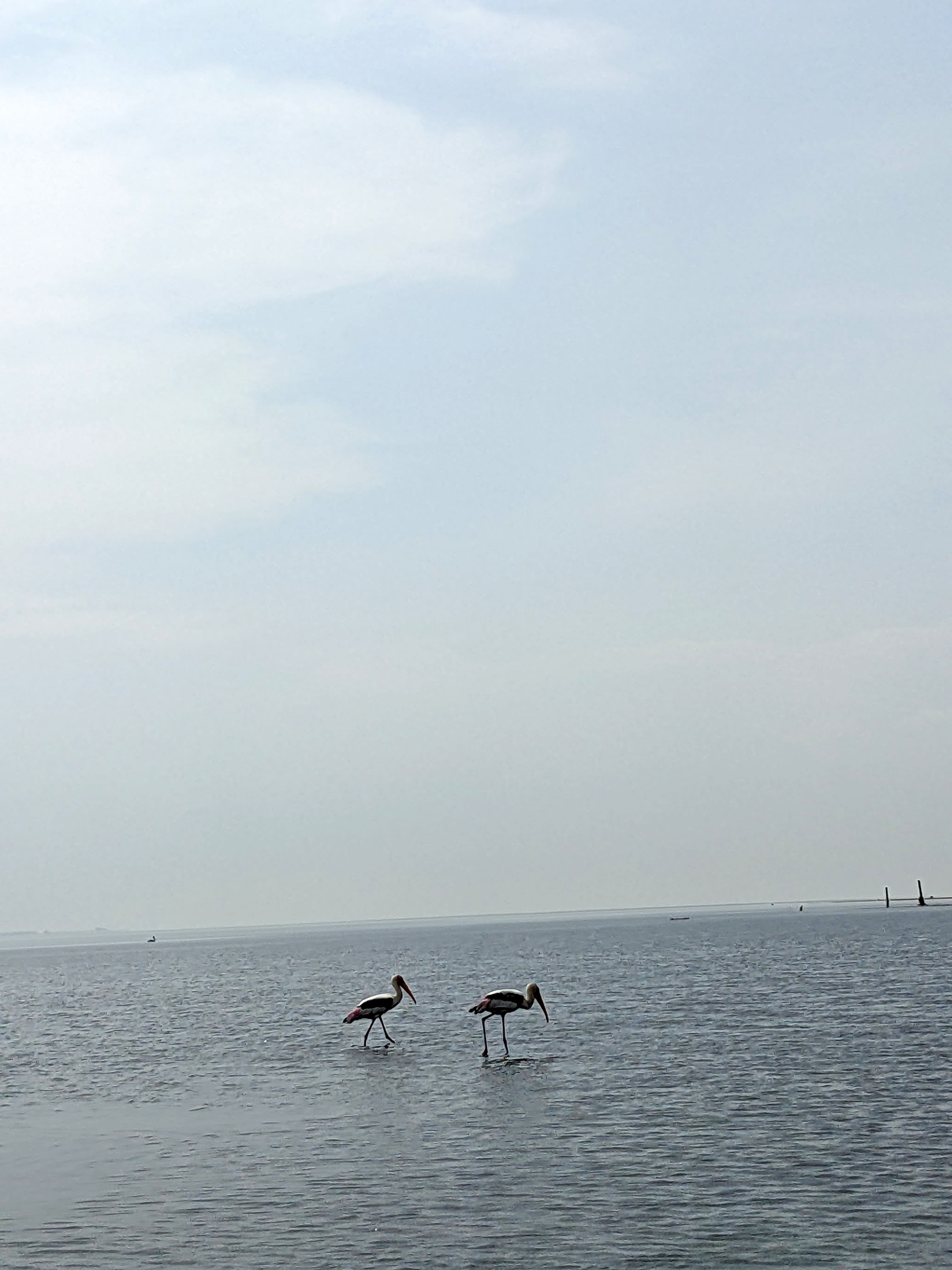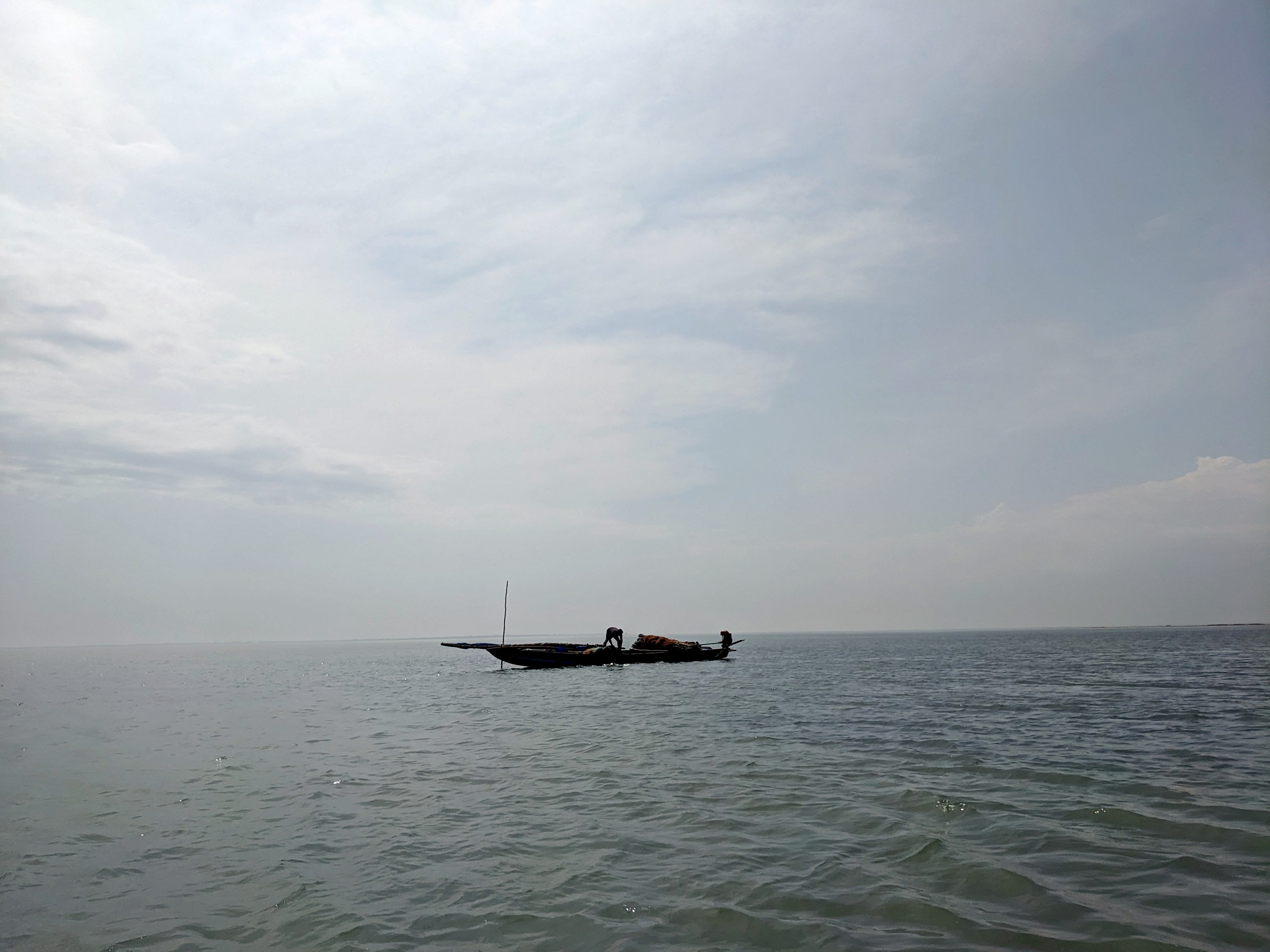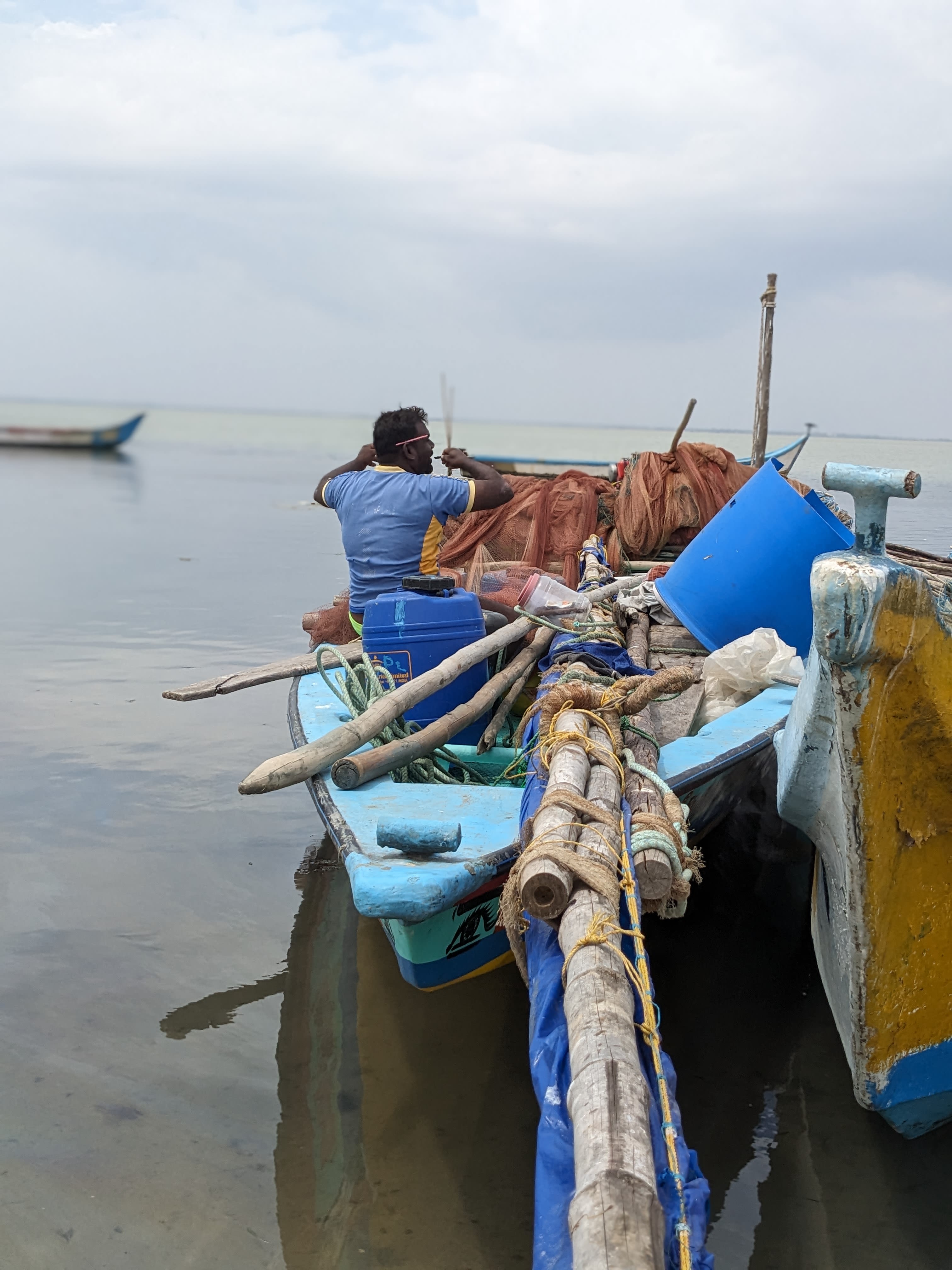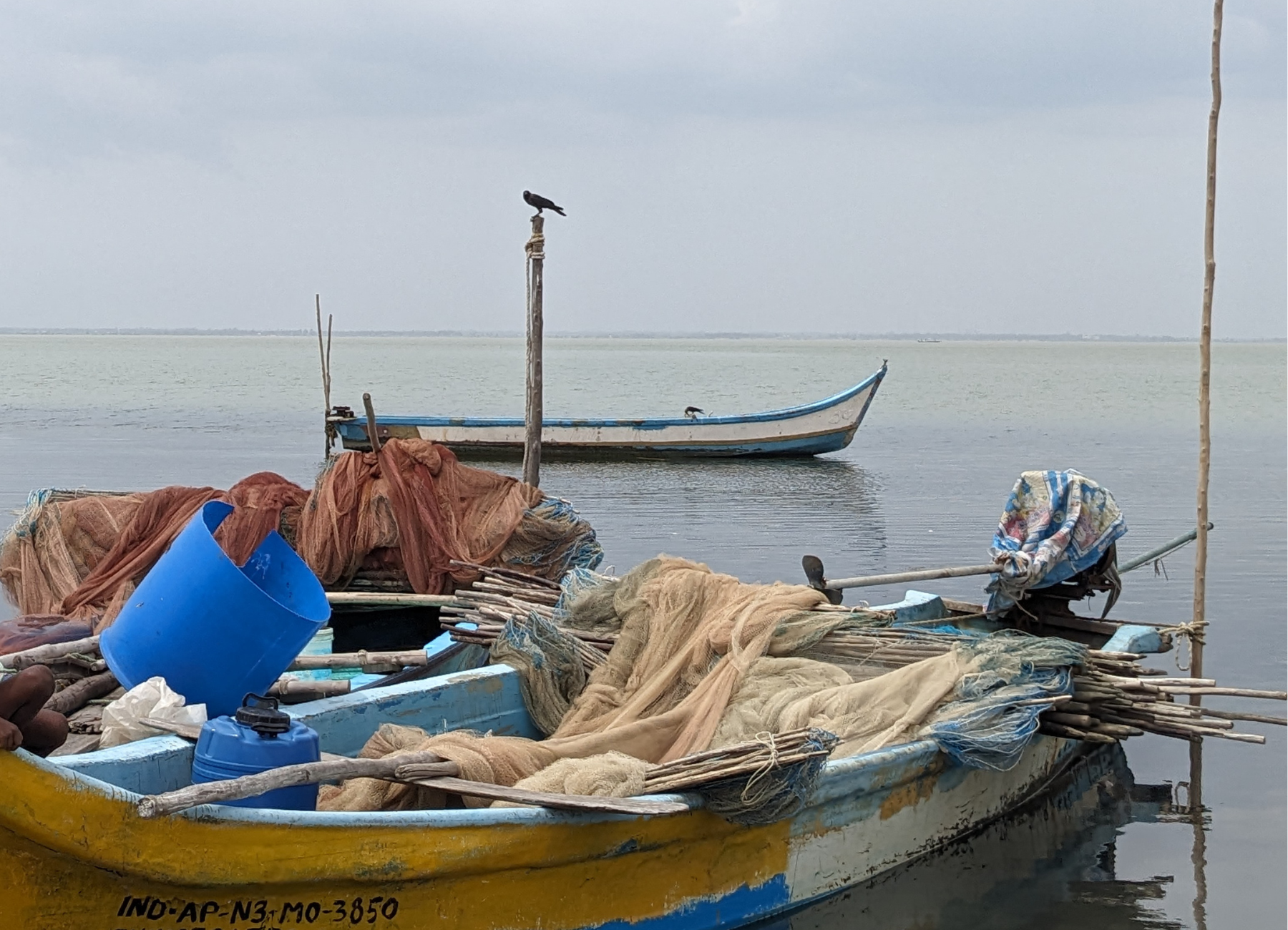In the Heart of Pulicat
How Tradition, Survival, and Environmental Dilemmas Unfold in Pulicat's Island Villages
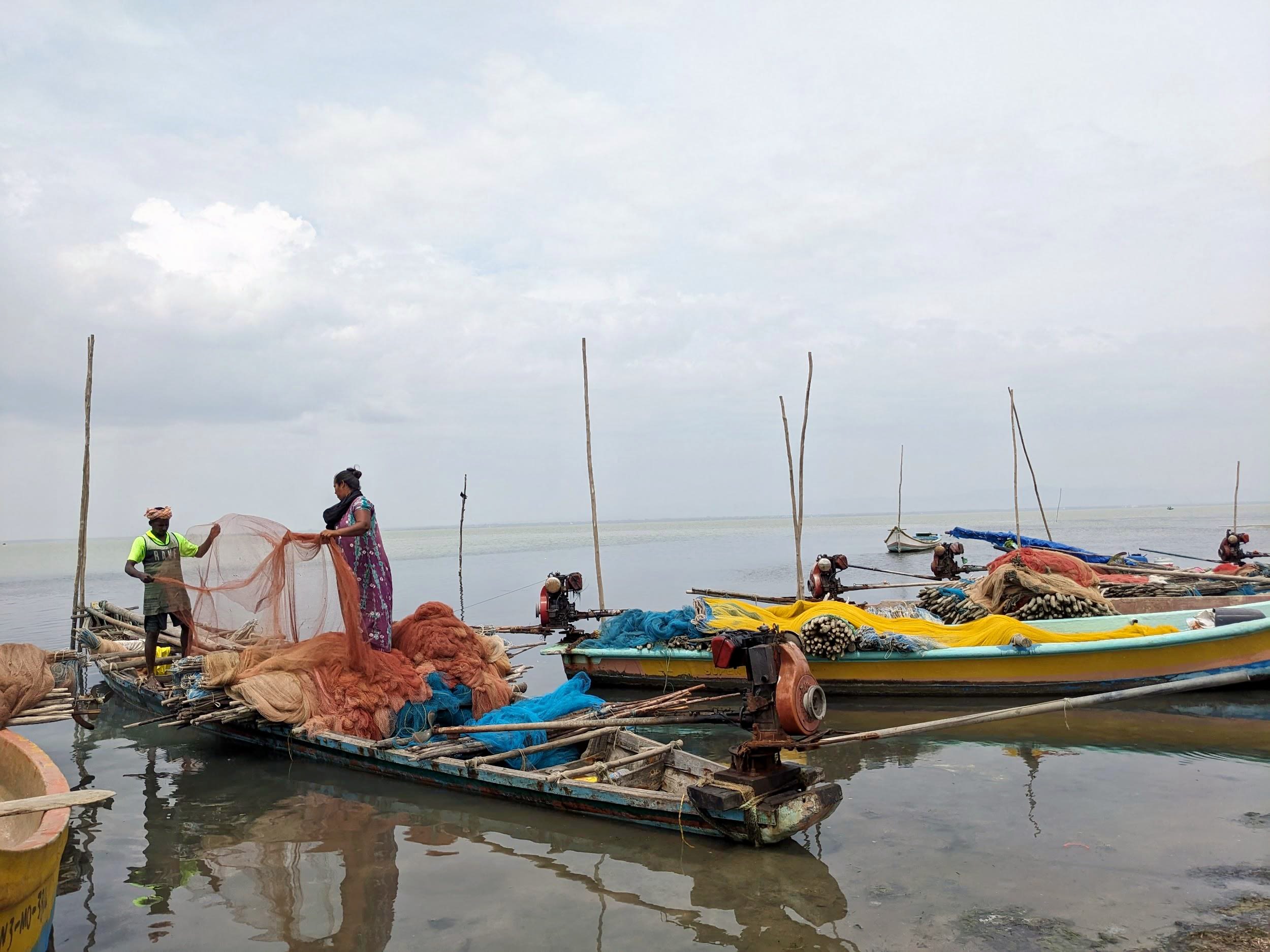
Away from the hustle and bustle of the city, the brackish water lagoon i.e. the Pulicat Lake on the Coromandel Coast offers views of calm waters, boating and exotic birds. Scattered across the lake are several islands, some connected by roads and others accessible only by boat.
As part of LEAD’s study Exploring the Intersection of Environment, Gender, Caste, Livelihoods, Finance and Wellbeing in Pulicat Lake, South India — part of a broader effort aimed at understanding a complex coastal ecosystem — we visited one of the less-connected villages that can be described as "Island Villages."
Unlike the islands connected by roads, which are often teeming with visitors, we arrived at a deserted lakeshore on a Friday morning in August, for our boat ride to this remote island. With the sun beating down, we watched the scene around us while waiting for everyone to arrive.
A handful of motorboats with their owners, either commuting to the island or busy fishing, were docked there. Of all the boats, however, only one was waiting to ferry passengers.
Although less frequent, one would at least expect more than one ferry at the dock, but as we would later find out, this peculiarity was linked to the customary rules of the island village we were about to visit. For the time being, our concern was, “How far away is this island village and how can people live in the middle of nowhere?”
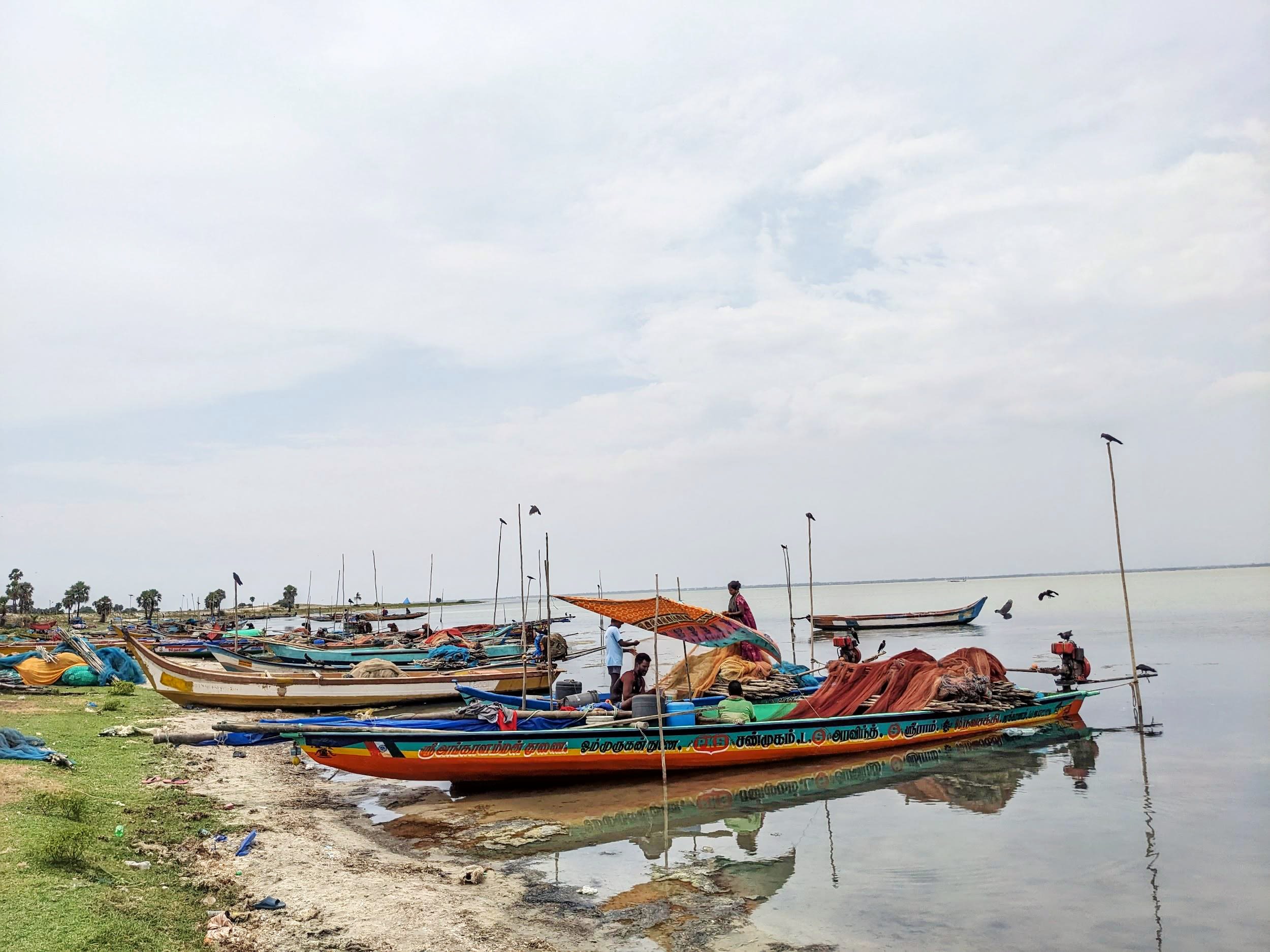

Beyond the Horizon
From our vantage point, the lake stretched far and wide, dotted with boats large and small, and no land was visible on the horizon. During the 40-minute boat ride, we saw coastal birds, fishing boats, and nets set in the water. Gradually the island came into view. When we finally reached the other side of the lake, we got off the boat in a quiet village where there were few people out on that sultry morning.
Coastal birds in Pulicat Lake on the way to the island.
Coastal birds in Pulicat Lake on the way to the island.
A boat drifts along gently.
A boat drifts along gently.
Invisible Lines
As in many villages of rural India, caste boundaries have given rise to spatial segregation in the island village - the fishing community and the non-fishing community, who live in separate colonies on either side of a large barren ground. Locals informed us that the caste panchayat (‘Katta Panchayat’) maintains social order and imposes penalties in cases of theft, land disputes, love marriages, and other acts that are considered violations of the village’s customary laws.
The fisherfolks we met – 4-5 men and 2 women – continued to sort their fishing nets as they shared more details about the village. The sight of women standing on the boats doing the same tasks as their male counterparts was another peculiar sight, as rural conventions in fishing communities such as the dominant Pattinavar fishermen dictate that the men of the house go fishing while the women take on activities such as cleaning the fish, processing, selling, and so on.
In the usual scenario, multiple fishermen take one boat, and the proceeds from the catch are divided among all of them, with the boat owner getting the larger share. In this village, almost every fisherman owns a boat, and both the men and women of a household go fishing here, ensuring that a household can take home all the fish they catch.
Revathi, one of the fisherfolks, says:
“We usually pack basic supplies like water and cooking materials in our boat and go fishing for 10 days at a stretch.”
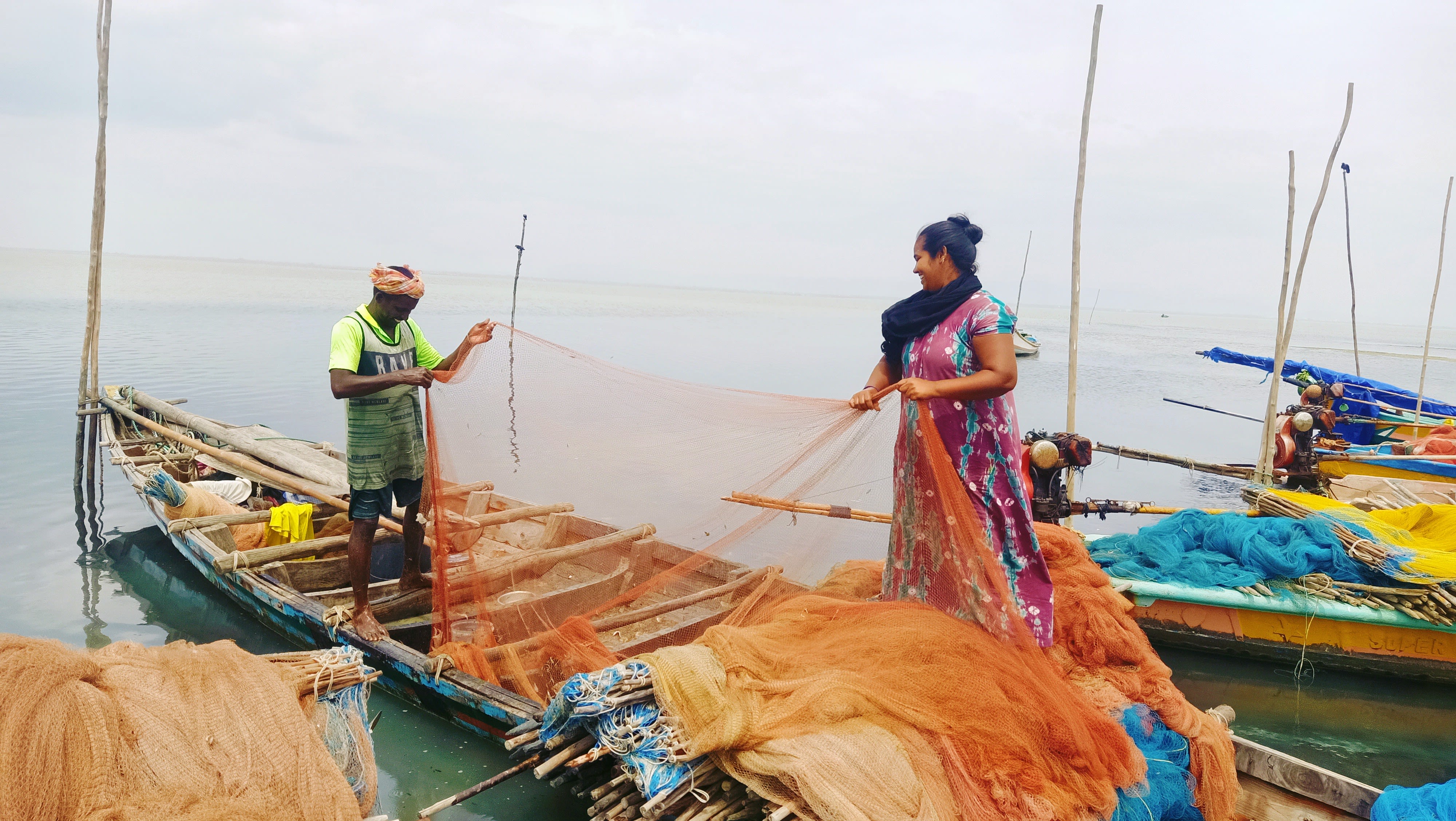
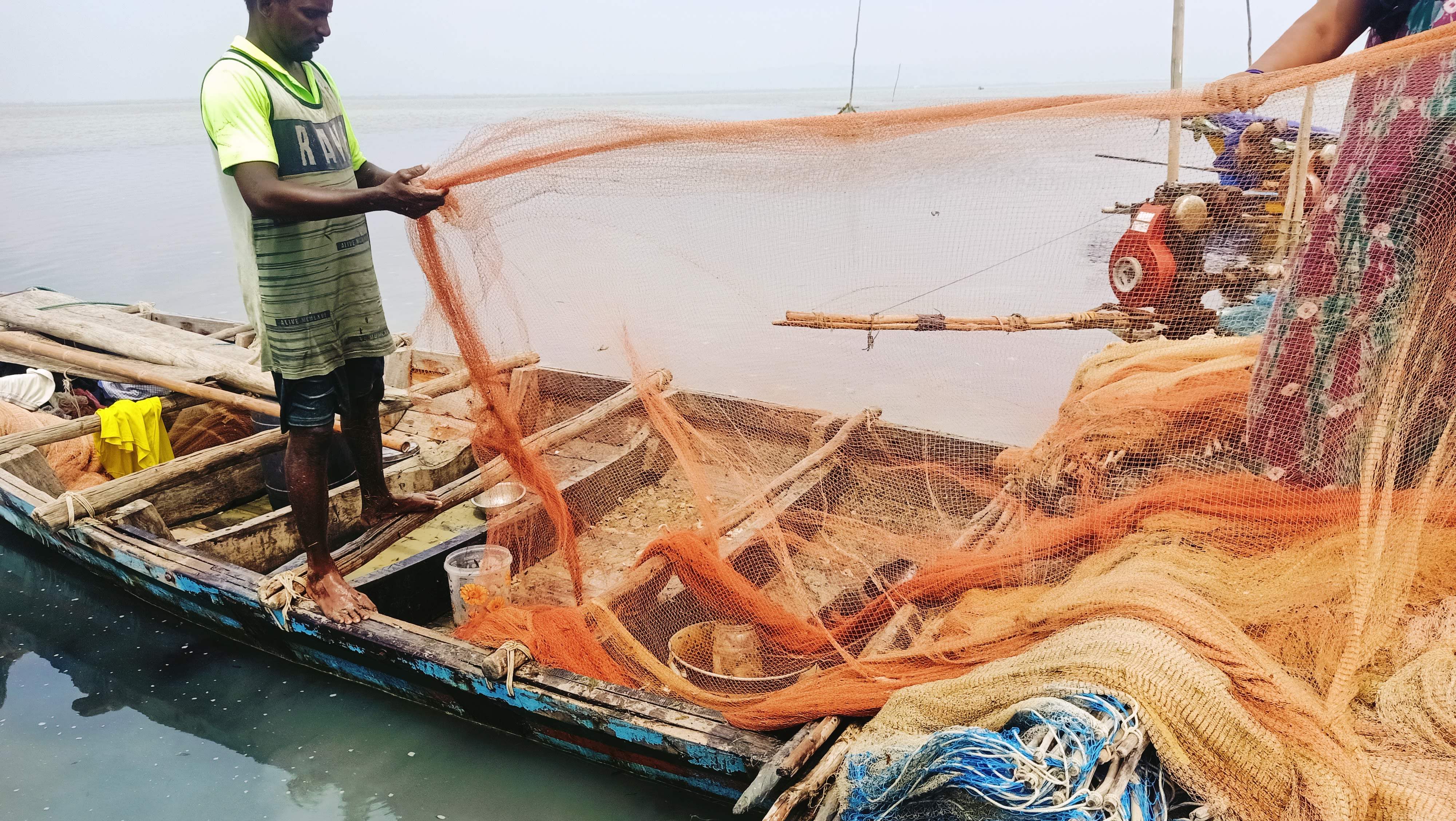
A Community-led Approach to Managing Resources
To ensure sustainable and equitable use of the fishery, they follow a community-based approach to managing the natural resources of the large body of water. To further elaborate, the lagoon is a fragile ecosystem that is threatened by anthropogenic impacts such as the increase in population around the lake, industrial pollution, overfishing, use of chemical fertilizers and pesticides, etc. Being a shared resource, it is highly vulnerable to overfishing, and to mitigate this problem, coastal fishing communities are working within resource-sharing systems.
The most noted and well-researched fishing system along the Coromandel is called the Padu system, which determines who can fish, permissible areas of the water body, equipment used and frequency of fishing. But the term doesn’t ring a bell for the fisherfolk of this island village. Their system is similar but they don’t recall a name associated with it. As per their system, 25 villages have a verbal agreement over areas of the water body they are entitled to and the days they are allowed to fish.
Another fisherman, Prathap tells us:
“We go fishing 15 days a month in the designated areas, and the days between the 20th and 25th of a month constitute a break period”.
As for the question of the rationale behind the rules or who made them, they are generations-old rules so no one knows the “what", “why" and “how" behind them. This system is a long-held practice that continues to be acknowledged and followed. On occasion, a transgression of these rules in terms of boundary violations has led to disputes between villages.
A fisherman prepares his boat for the day ahead.
A fisherman prepares his boat for the day ahead.
Close-up shot of the boat stacked with fishing nets.
Close-up shot of the boat stacked with fishing nets.
Revathi tells us:
“Fishermen from other villages have often trespassed into our fishing grounds, which has led to disputes in the past, but we can be easily overpowered due to our small population. Given the sparse population of the village, the fishing community is also quite small, so we avoid getting involved in such disputes. The average catch per fisherman is high, so we just choose to compromise our share a little in encroachment cases.”
Selling the catch is another story. The village is a 40-minute boat ride away from the mainland, and the marketplace is even farther. Revathi and others typically sell the catch to intermediaries.
“He (the middleman) gives me a booking advance of Rs 12,000 every year, so I sell all my catch to him. I sell at the rate of Rs 400 for 1.5 kg, which then gets sold in the market for ₹500,” says Prathap.
And how does he know the market price of the catch? “I trust him (middleman) to tell me the correct price.” Prathap can make an average monthly earning of ₹20,000 from fishing, which gets him enough savings.
“I use Rs 7,000 for household expenses and Rs 3,000 for boat expenses. I put the remaining Rs 10,000 in the chit fund.”
Prathap and many other villagers rely on chit funds for major expenses such as education, marriage, house building, boat buying, etc. In emergencies, they borrow money from friends and relatives, and the last resort is moneylenders. They do not opt for formal banking institutions to borrow but primarily use their bank accounts to receive social welfare transfers from the government.
Overall, the fishermen's income is sufficient to meet their daily expenses and to save for larger expenditures. Everyone in the fishing community has a television and a refrigerator, and most of them own a boat. However, Prathap and Revathi do not want their respective children to continue the generations-old family occupation. The remote location and small population provide them with rich fishing resources, but carrying on fishing entails living on an island bereft of development.
The island boasts a strong telecommunication signal and an uninterrupted power supply. Still, other basic infrastructure includes only one primary school in an Anganwadi centre where one teacher teaches all classes during the mere two hours of school. Children take the boat daily to get to the nearest schools and colleges for higher education. There are still no medical facilities, banks, post offices or police stations.
Although the mobile medical camps organised by the government cover the need for basic medical care to a certain extent, the lack of infrastructure is even more noticeable in medical emergencies. All in all, despite a sustainable and financially secure livelihood, acute underdevelopment means an arduous life on the brink of mere survival.
As a result, there is a high out-migration from the village, as Prathap and Revathi say:
“Many have already left the island village in search of a better life. For a community that has long been dependent on water, underdevelopment has led them to seek alternative sources of livelihood in nearby towns.”
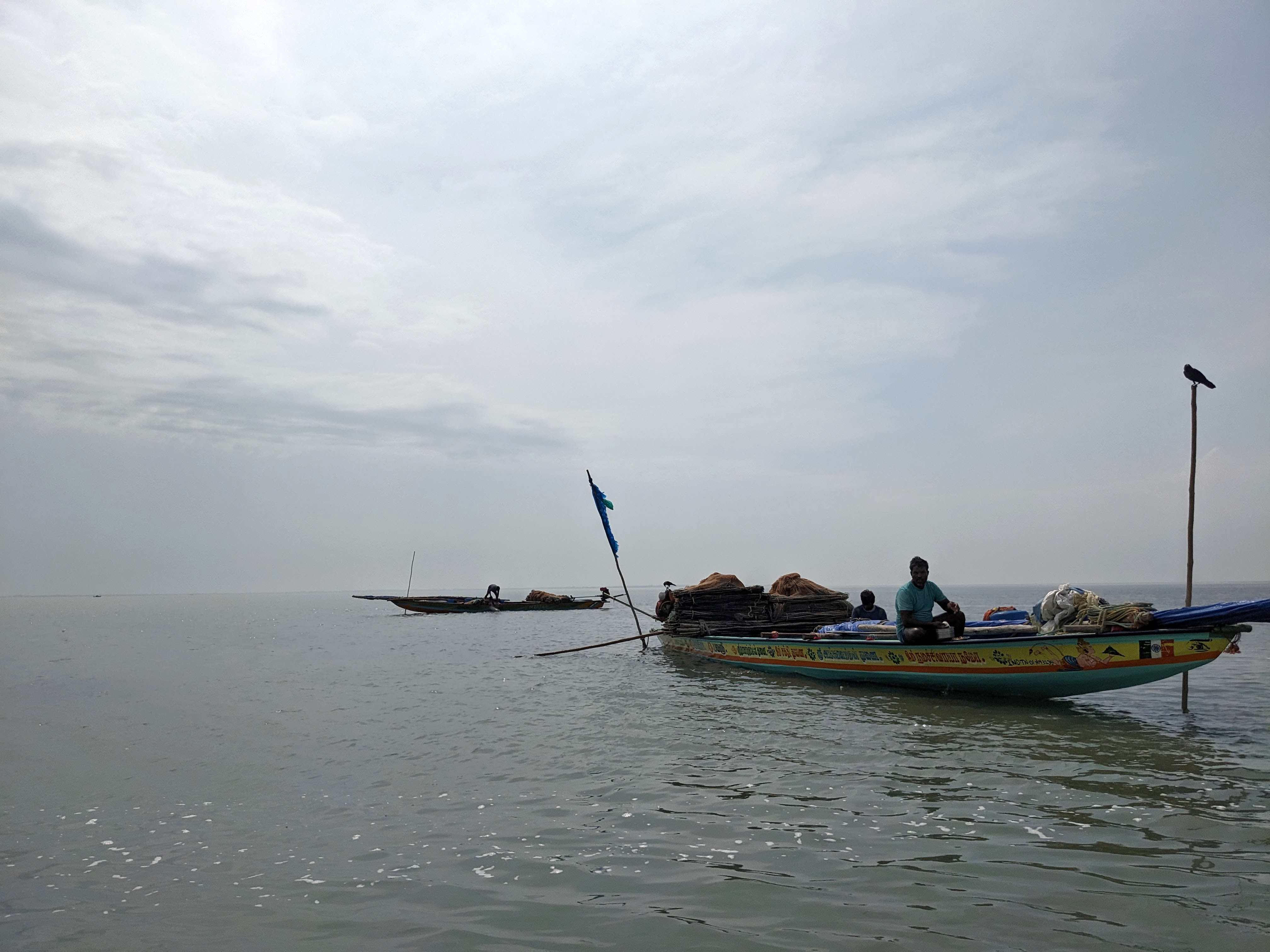

What makes that village special is its location in the middle of the country’s second-largest brackish water lagoon and its proximity to the mangroves where migratory birds seek refuge in the colder months. Ultimately, however, it is also like many other villages whose inhabitants lead a difficult life and hope for a better future for their children.
On the one hand, reducing dependence on water bodies may prove beneficial in terms of replenishing and preserving the ecosystem, but on the other hand, it requires the displacement of many households. Nevertheless, other threats to the Lake persist, and the vulnerability of both the lake and its people highlights the need for state action to address environmental threats and improve social and physical infrastructure.
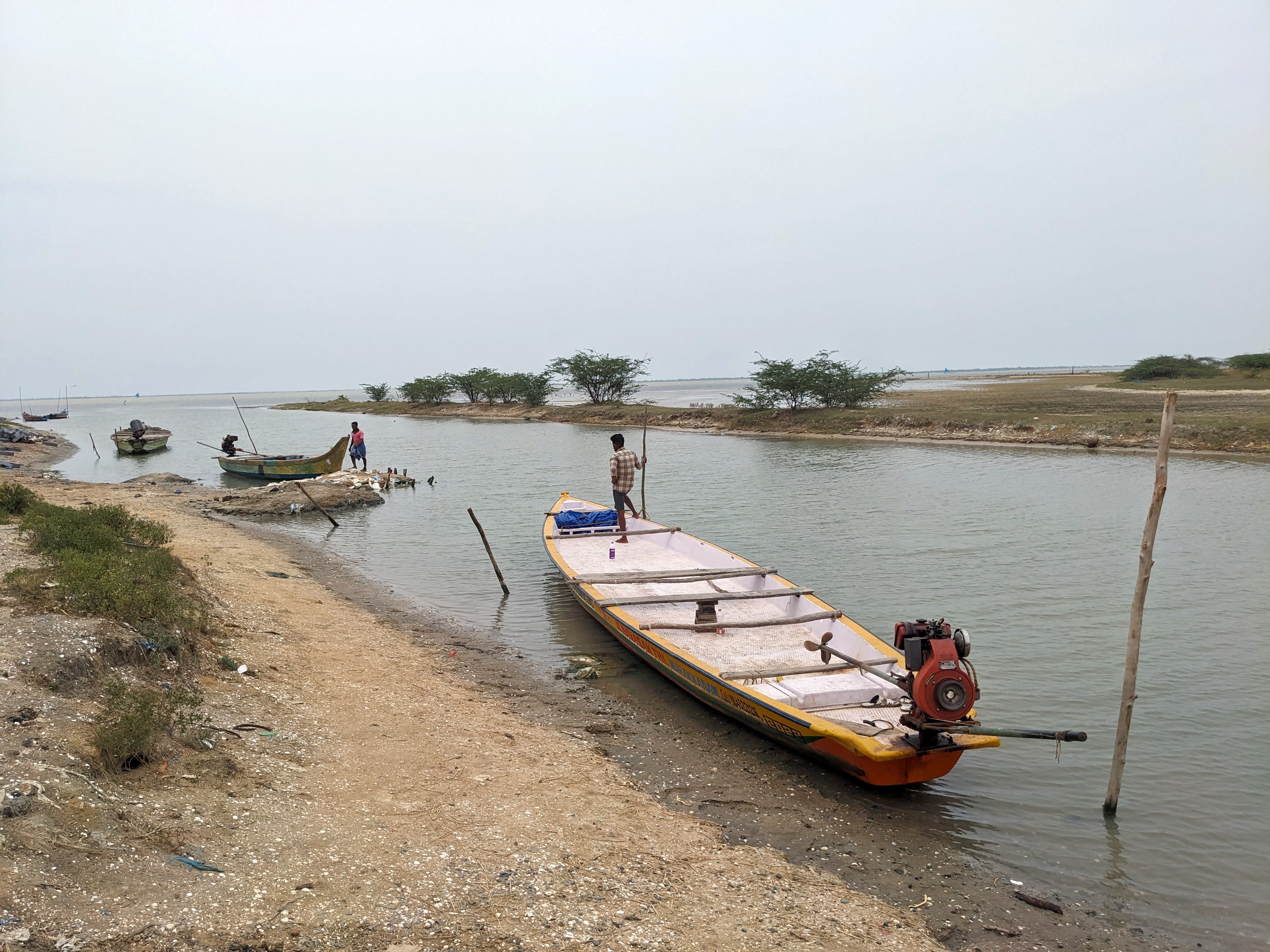
Story and text by Megha Shree and Harshula Sinha. The authors would like to thank Pramod Tiwari, Christopher Glan, Arul Raj, and Kothandam D for supporting the fieldwork for the project.
Production and design support by: Keerthana Ramaswamy
Special thanks to the community of the Pulicat region for their time, patience, and contributions to this story.

